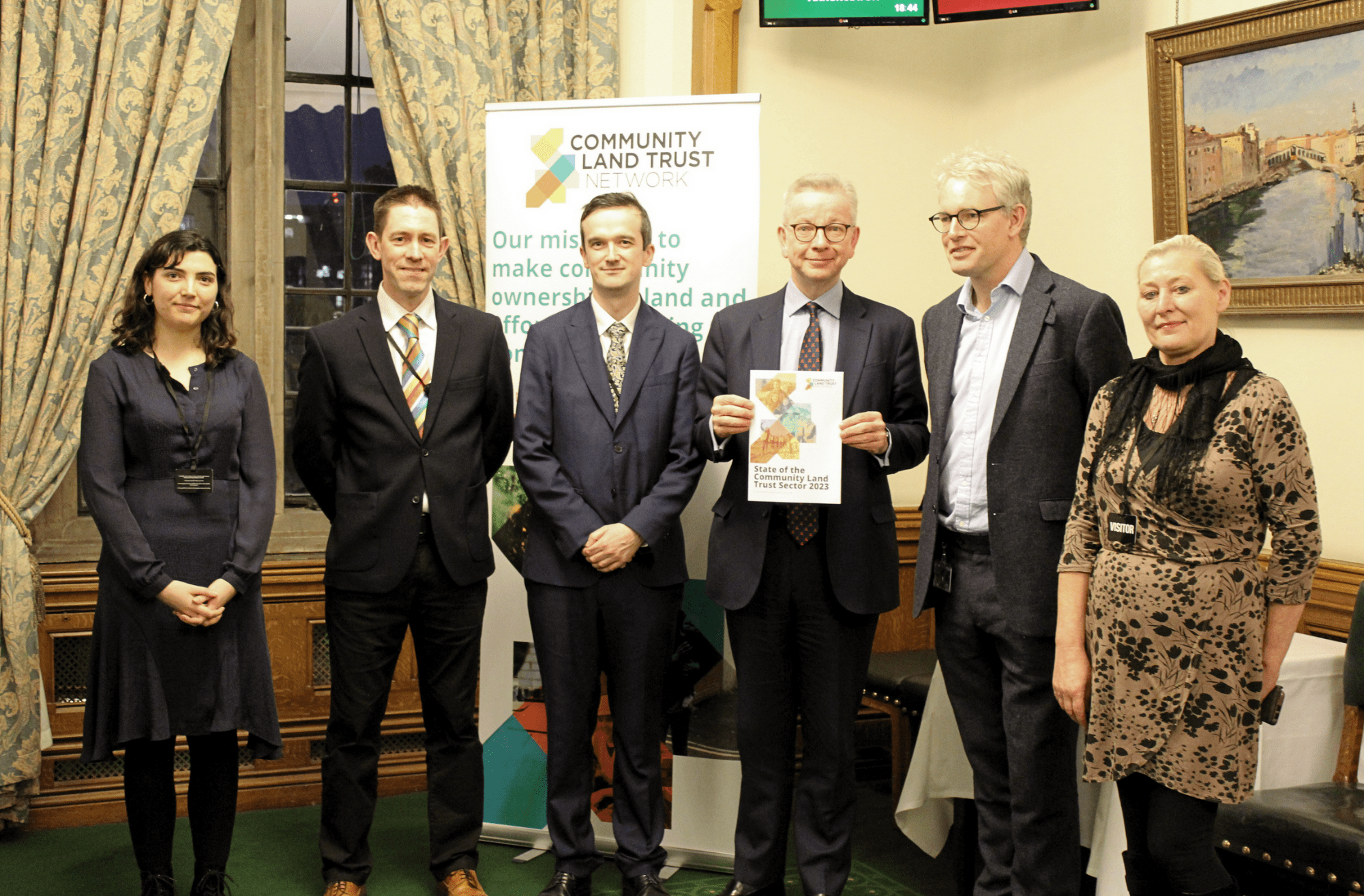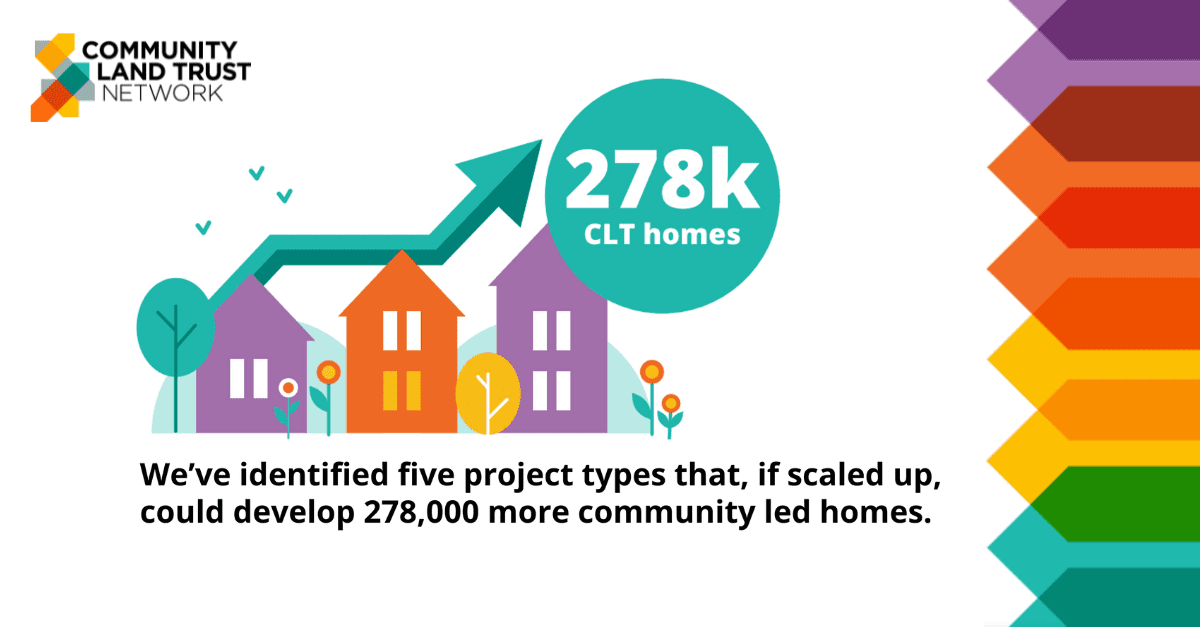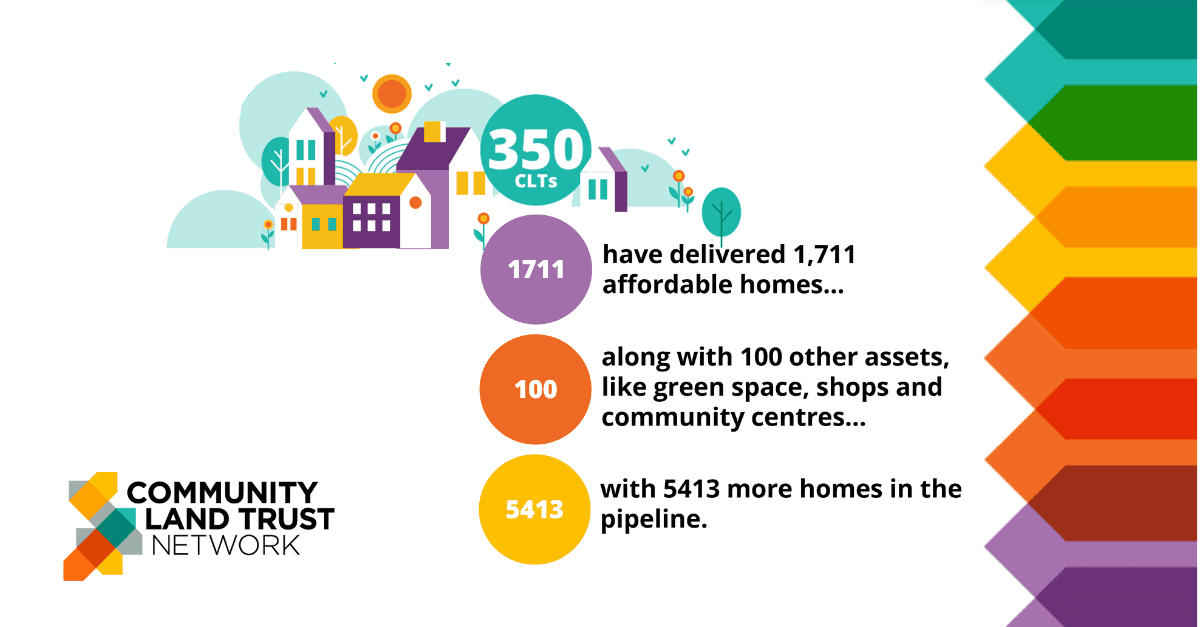What could be a better example than a neighbourhood taking control, then being in charge of its destiny and making sure that the homes in which people live have the heart and soul of that community embedded in the bricks and mortar? That’s why I’m a supporter of CLTs.

With special thanks to our partner, Ecology Building Society for sponsoring the report launch.
The Community Land Trust Network has published its latest State of the CLT Sector report.
Launched by the Secretary of State Michael Gove MP in Parliament, the report finds that industry partnerships could help communities to build at least 278,000 homes through replicable project types.
It is estimated that 80% of these homes would be additional and only made possible due to the involvement of a CLT.
The market opportunities to scale proven models are:
- 30,000 homes on rural exception sites delivered in partnership with housing associations
- 20,000 homes using portions of large sites, whether urban regeneration or greenfield garden villages
- 117,000 homes on larger community led exception sites in partnership with developers
- 33,000 homes in infill sites in low-density council estates
- 78,000 homes by 150 larger urban CLTs delivering 500 homes each in cities and towns across the country
These figures would see the notional value of CLT assets rise from £550 million today to £47 billion.

The State of the Community Land Trust Sector 2023 report, which was launched in Parliament on Thursday 23 March with Secretary of State, Michael Gove MP and Danny Kruger MP speaking, explains how the market opportunities can be delivered through a pattern book of replicable models.
The charity is calling on housing associations, councils, developers and other landowners to work with them and partner with more CLTs. Please get in touch if you are interested and would like to discuss this fursther.
The report collates key data on the current CLT sector:
- There are 350 CLTs in England and Wales
- They have built or renovated 1,711 affordable homes and there are 5,413 more in the pipeline
- CLTs own over 100 other assets including green spaces, community centres and shops
- Six in ten CLTs have developed in sensitive areas that are protected by the planning system like Areas of Outstanding Natural Beauty and National Parks

Tom Chance, CEO of the Community Land Trust Network, said:
“Our report showcases the significant growth of CLTs over the past decade. Their impact goes beyond the increased access to affordable homes, it also means reduced greenhouse gas emissions, greater social cohesion and better health. When communities have agency, everyone wins.
“With the right policy and industry support there are clear opportunities to significantly scale up to develop 278,000 community led homes.
“We are piloting a new growth programme and we want to work with housing associations, developers, local authorities and other landowners to advance the pattern book for delivery approaches.”
